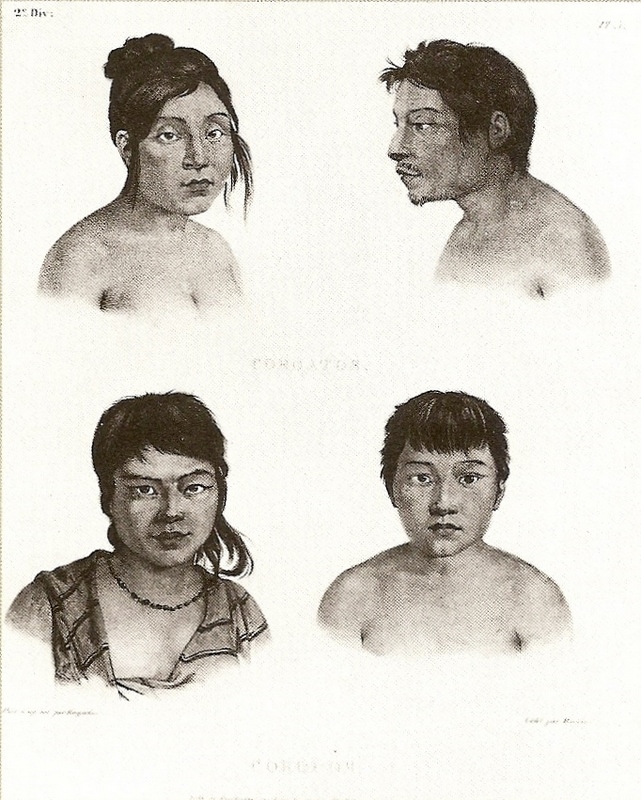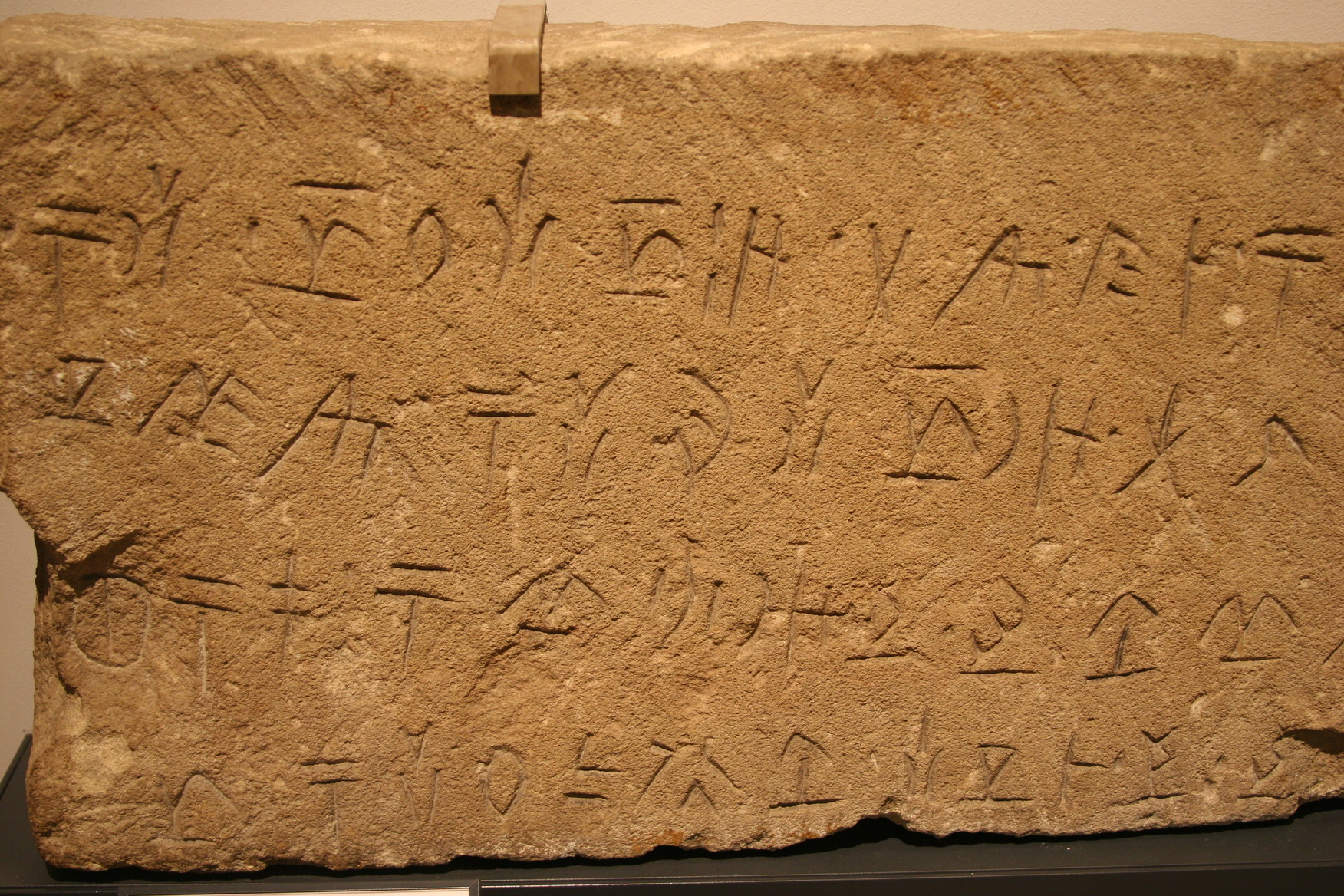|
Koropó Language
Koropó (Coropó) is an extinct language of eastern Brazil. It has been variously classified as a Maxakalían or a Purian language. Classification Although Silva Neto (2007) had assumed Koropó to be a Purian language, Nikulin (2020) classifies Koropó as Macro-Jê ( Maxakalían branch).Nikulin, Andrey. 2020. Proto-Macro-Jê: um estudo reconstrutivo'. Doctoral dissertation, University of Brasília. Documentation Koropó is attested by two word lists collected by German explorers in the early 1800s: *Eschwege (2002: 122-127), 127 words collected in 1815 * Schott (1822, pp. 48-51), 55 words collected in 1818Schott, Heinrich Wilhelm. 1822. ''Tagebücher des K.K. Gärtners in Brasilien''. vol. 2. Brünn. Distribution In the 18th century, Koropó speakers lived with Coroado Puri speakers along the Pomba River in Minas Gerais Minas Gerais () is a state in Southeastern Brazil. It ranks as the second most populous, the third by gross domestic product (GDP), and the fourth la ... [...More Info...] [...Related Items...] OR: [Wikipedia] [Google] [Baidu] |
Maxakalían Languages
The Maxakalían languages (also Mashakalían) were first classified into the Jê languages. It was only in 1931 that Čestmír Loukotka separated them from the Jê family. Alfred Métraux and Curt Nimuendajú considered the Maxakalían family isolated from others. John Alden Mason suggests a connection with the Macro-Jê stock, confirmed by Aryon Rodrigues. Languages Apart from extinct varieties generally seen as dialects of Maxakalí, Mason noted resemblances with a few other extinct languages of the area: Pataxó, Malalí and Coropó. However, Coropó is now thought to be a Purian language. Campbell (1997) therefore lists the Maxakalian languages as: # Malalí ''(†)'' # Pataxó (Patashó) ''(†)'' (retain some words) # Maxakalí (Mashacalí) (1,270 speakers) ''Glottolog'' (2016) restores Coropó (Koropó) as a Maxakalían language. Nikulin (2020) Nikulin (2020) proposes the following internal classification of the Maxakalían languages:Nikulin, Andrey. 2020. Prot ... [...More Info...] [...Related Items...] OR: [Wikipedia] [Google] [Baidu] |
Glottolog
''Glottolog'' is a bibliographic database of the world's lesser-known languages, developed and maintained first at the Max Planck Institute for Evolutionary Anthropology in Leipzig, Germany (between 2015 and 2020 at the Max Planck Institute for the Science of Human History in Jena, Germany). Its main curators include Harald Hammarström and Martin Haspelmath. Overview Sebastian Nordhoff and Harald Hammarström created the Glottolog/Langdoc project in 2011. The creation of ''Glottolog'' was partly motivated by the lack of a comprehensive language bibliography, especially in ''Ethnologue''. Glottolog provides a catalogue of the world's languages and language families and a bibliography on the world's less-spoken languages. It differs from the similar catalogue '' Ethnologue'' in several respects: * It tries to accept only those languages that the editors have been able to confirm both exist and are distinct. Varieties that have not been confirmed, but are inherited from anothe ... [...More Info...] [...Related Items...] OR: [Wikipedia] [Google] [Baidu] |
Rugendas - Coroatos E Coropos
Johann Moritz Rugendas (29 March 1802 – 29 May 1858) was a German painter, famous in the first half of the 19th century for his works depicting landscapes and ethnographic subjects in several countries in the Americas. Rugendas is considered "by far the most varied and important of the European artists to visit Latin America." He was influenced by Alexander von Humboldt. Biography Rugendas was born in Augsburg, then part of the Prince-Bishopric of Augsburg in the Holy Roman Empire, now (Germany), into the seventh generation of a family of noted painters and engravers of Augsburg (he was a great grandson of Georg Philipp Rugendas, 1666–1742, a celebrated painter of battles). He first studied drawing and engraving with his father, Johann Lorenz Rugendas II (1775–1826). From 1815-17, he studied with Albrecht Adam (1786–1862), and later in the Academy de Arts of Munich, with Lorenzo Quaglio II (1793–1869). When Rugendas was born, Augsburg was a Free Imperial City o ... [...More Info...] [...Related Items...] OR: [Wikipedia] [Google] [Baidu] |
Extinct Language
An extinct language is a language that no longer has any speakers, especially if the language has no living descendants. In contrast, a dead language is one that is no longer the native language of any community, even if it is still in use, like Latin. A dormant language is a dead language that still serves as a symbol of ethnic identity to a particular group. These languages are often undergoing a process of revitalisation. Languages that currently have living native speakers are sometimes called modern languages to contrast them with dead languages, especially in educational contexts. In the modern period, languages have typically become extinct as a result of the process of cultural assimilation leading to language shift, and the gradual abandonment of a native language in favour of a foreign ''lingua franca'', largely those of European countries. As of the 2000s, a total of roughly 7,000 natively spoken languages existed worldwide. Most of these are minor languages in dang ... [...More Info...] [...Related Items...] OR: [Wikipedia] [Google] [Baidu] |
Brazil
Brazil ( pt, Brasil; ), officially the Federative Republic of Brazil (Portuguese: ), is the largest country in both South America and Latin America. At and with over 217 million people, Brazil is the world's fifth-largest country by area and the seventh most populous. Its capital is Brasília, and its most populous city is São Paulo. The federation is composed of the union of the 26 States of Brazil, states and the Federal District (Brazil), Federal District. It is the largest country to have Portuguese language, Portuguese as an List of territorial entities where Portuguese is an official language, official language and the only one in the Americas; one of the most Multiculturalism, multicultural and ethnically diverse nations, due to over a century of mass Immigration to Brazil, immigration from around the world; and the most populous Catholic Church by country, Roman Catholic-majority country. Bounded by the Atlantic Ocean on the east, Brazil has a Coastline of Brazi ... [...More Info...] [...Related Items...] OR: [Wikipedia] [Google] [Baidu] |
Purian Languages
Purian (also Purían) is a pair of extinct languages of eastern Brazil: * Purí * Coroado Puri (also known as Colorado) Coropó (Koropó), once spoken in Minas Gerais and Rio de Janeiro, was added by Campbell (1997), but removed again by Ramirez et al. (2015).Ramirez, H., Vegini, V., & França, M. C. V. de. (2015)Koropó, puri, kamakã e outras línguas do Leste Brasileiro ''LIAMES: Línguas Indígenas Americanas'', 15(2), 223 - 277. Purian is part of the Macro-Jê proposal. However, when Coropó is removed, there are not sufficient lexical connections to maintain this classification. Attestation The Purian languages are only attested by a few word lists from the 19th century. The lists are: Puri: * Martius (1863: 194-195), collected in 1818 at São João do Presídio (now Visconde do Rio Branco, Minas Gerais). *Eschwege (2002: 122-127), collected in 1815 near São João do Presídio *Torrezão (1889: 511-513), collected in 1885 at Abre Campo (near Manhuaçu, Minas Gerai ... [...More Info...] [...Related Items...] OR: [Wikipedia] [Google] [Baidu] |
Macro-Jê Languages
Macro-Jê (also spelled Macro-Gê) is a medium-sized language stock in South America, mostly in Brazil but also in the Chiquitanía region in Santa Cruz, Bolivia, as well as (formerly) in small parts of Argentina and Paraguay. It is centered on the Jê language family, with most other branches currently being single languages due to recent extinctions. Families The Macro-Jê family was first proposed in 1926, and has undergone moderate modifications since then. Kaufman (1990) finds the proposal "probable". * Jê * Jeikó † * Krenák (Botocudo) ** Krenak (10 speakers) * Borôroan **Bororo ***Bororo (1,400 speakers) *** Umotína † ** Otuke † * Kamakã † * Karajá (2,700 speakers) * Karirí † * Maxakalían * Ofayé (2 speakers) * Purían † * Rikbaktsá * Yabutian oribund Eduardo Ribeiro of the University of Chicago finds no evidence to classify Fulniô (Yatê) and Guató as Macro-Jê, ''pace'' Kaufman, nor Otí, ''pace'' Greenberg. Ribeiro does include Chiquitano ... [...More Info...] [...Related Items...] OR: [Wikipedia] [Google] [Baidu] |
Wilhelm Ludwig Von Eschwege
Baron Wilhelm Ludwig von Eschwege (1777-1855) was a geologist, geographer and above all a mineralogist and engineer of German mines. He played an important role in all areas of activity in both Portugal and Brazil, where he joined the Portuguese court and taking refuge in Brazil between 1807 and 1821. Early life The Baron of Eschwege was born in Aue, in the vicinity of the city that gives its name to his family, Eschwege, in the Duchy of Hessen-Kassel, today part of the Federal State of Hessen, Germany. In Göttingen in Lower-Saxony, he studied law and science, studies he completed at the University of Marburg before launching on a military career. Whilst still in Germany, he was contracted to serve as director of mines in Portugal, where he arrived in 1803, accompanied by another military engineer Friedrich Ludwig Wilhelm Varnhagen, father of the renowned historian Francisco Adolfo de Varnhagen, who played a crucial role in the classification of the Manueline style. Eschwege worke ... [...More Info...] [...Related Items...] OR: [Wikipedia] [Google] [Baidu] |
Heinrich Wilhelm Schott
Heinrich Wilhelm Schott (7 January 1794 in Brünn (Brno), Moravia – 5 March 1865 at Schönbrunn Palace, Vienna) was an Austrian botanist well known for his extensive work on aroids (Araceae). He studied botany, agriculture and chemistry at the University of Vienna, where he was a pupil of Joseph Franz von Jacquin (1766–1839). He was a participant in the Austrian Brazil Expedition from 1817 to 1821. In 1828 he was appointed ''Hofgärtner'' (royal gardener) in Vienna, later serving as director of the Imperial Gardens at Schönbrunn Palace (1845). In 1852 he was in charge of transforming part of palace gardens in the fashion of an English garden. He also enriched the Viennese court gardens with his collections from Brazil. He was also interested in Alpine flora, and was responsible for development of the alpinum at Schloss Belvedere in Vienna. In 2008, botanists P.C.Boyce & S.Y.Wong published '' Schottarum'', a genus of flowering plants from Borneo belonging to the family Ar ... [...More Info...] [...Related Items...] OR: [Wikipedia] [Google] [Baidu] |
Coroado Puri Language
Coroado Purí is an extinct language of eastern Brazil Brazil ( pt, Brasil; ), officially the Federative Republic of Brazil (Portuguese: ), is the largest country in both South America and Latin America. At and with over 217 million people, Brazil is the world's fifth-largest country by area .... References Purian languages Extinct languages of South America Languages extinct in the 19th century Indigenous languages of Eastern Brazil {{indigenousAmerican-lang-stub ... [...More Info...] [...Related Items...] OR: [Wikipedia] [Google] [Baidu] |
Pomba River
The Rio Pomba is a river of Minas Gerais and Rio de Janeiro states in southeastern Brazil, one of the principle tributaries of the Paraíba do Sul. Geography The Rio Pomba begins in the city of Barbacena in Minas Gerais and flows south through the Zona da Mata to empty into the Paraíba do Sul between the towns of Cambuci and Itaocara, Rio de Janeiro. Its main tributaries are the rivers Piau, Xopotó, Pardo, and Formoso. The main cities along its banks are Cataguases in Minas Gerais and Santo Antônio de Pádua in Rio de Janeiro. Indigenous peoples In the 18th century, Koropó speakers lived with Coroado Puri speakers along the Pomba River.Ramirez, H., Vegini, V., & França, M. C. V. de. (2015)Koropó, puri, kamakã e outras línguas do Leste Brasileiro ''LIAMES: Línguas Indígenas Americanas'', 15(2), 223 - 277. Environmental issues The lands of the Rio Pomba basin are severely deforested, a process that began throughout the Zona da Mata during the coffee era and did not s ... [...More Info...] [...Related Items...] OR: [Wikipedia] [Google] [Baidu] |


